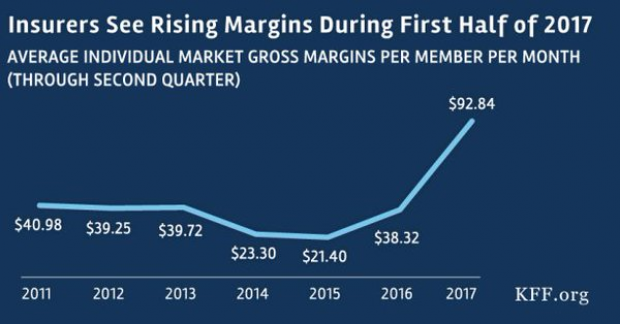How to Cut Your Homeowner’s Insurance in Half

That lousy credit score is costing you more than a good rate on a loan.
Insurance premiums for homeowners with excellent credit are half the price of premiums for homeowners with poor credit, according to a new report by insuranceQuotes.com. Homeowners with median credit pay about a third more than those with excellent credit.
The difference in premiums varies by state, with homeowners with poor credit in 38 states paying at least twice as much those with excellent credit. Homeowners in West Virginia have the biggest premium gap, with those with poor credit paying more than three times what homeowners with excellent credit pay.
Homeowners in Washington, D.C., and Ohio had the next highest gap in premiums (185 percent), followed by Montana (179 percent).
Related; The Easiest Way to Cut Your Home Insurance Premiums
In general, insurers are putting a higher emphasis on credit scores than they did last year, with scores having a bigger impact this year than last in 29 states. “It’s more important than ever to maintain a solid credit rating by paying their bills on time, keeping their balances low, and correcting errors on their credit reports,” Laura Adams, insurangeQuotes.com senior analyst said in a statement.
California, Massachusetts and Maryland do not allow insurers to consider credit in setting prices, and insurers in Florida don’t use it.
The average U.S. homeowner’s insurance premium is around $950. In addition to making an effort to boost their credit, homeowners should shop around every few years to see if they can find a better rate.
Top Reads from the Fiscal Times:
- The 10 Best States for Property Taxes
- Democrats Are Openly Speculating About an Election without Hillary Clinton
- California’s Latest Nightmare: San Joaquin Valley Is Sinking
Budget ‘Chaos’ Threatens Army Reset: Retired General
One thing is standing in the way of a major ongoing effort to reset the U.S. Army, writes Carter Ham, a retired four-star general who’s now president and CEO of the Association of the U.S. Army, at Defense One. “The problem is the Washington, D.C., budget quagmire.”
The issue is more than just a matter of funding levels. “What hurts more is the erratic, unreliable and downright harmful federal budget process,” which has forced the Army to plan based on stopgap “continuing resolutions” instead of approved budgets for nine straight fiscal years. “A slowdown in combat-related training, production delays in new weapons, and a postponement of increases in Army troop levels are among the immediate impacts of operating under this ill-named continuing resolution. It’s not continuous and it certainly doesn’t display resolve.”
Pentagon Pushes for Faster F-35 Cost Cuts

The Pentagon has taken over cost-cutting efforts for the F-35 program, which has been plagued by years of cost overruns, production delays and technical problems. The Defense Department rejected a cost-saving plan proposed by contractors including principal manufacturer Lockheed Martin as being too slow to produce substantial savings. Instead, it gave Lockheed a $60 million contract “to pursue further efficiency measures, with more oversight of how the money was spent,” The Wall Street Journal’s Doug Cameron reports. F-35 program leaders “say they want more of the cost-saving effort directed at smaller suppliers that haven’t been pressured enough.” The Pentagon plans to cut the price of the F-35A model used by the Air Force from a recent $94.6 million each to around $80 million by 2020. Overall, the price of developing the F-35 has climbed above $400 billion, with the total program cost now projected at $1.53 trillion. (Wall Street Journal, CNBC)
Chart of the Day - October 6, 2017
Financial performance for insurers in the individual Obamacare markets is improving, driven by higher premiums and slower growth in claims. This suggests that the market is stabilizing. (Kaiser Family Foundation)
Quote of the Day - October 5, 2017
"The train's left the station, and if you're a budget hawk, you were left at the station." -- Rep. Mark Sanford, R-S.C.


